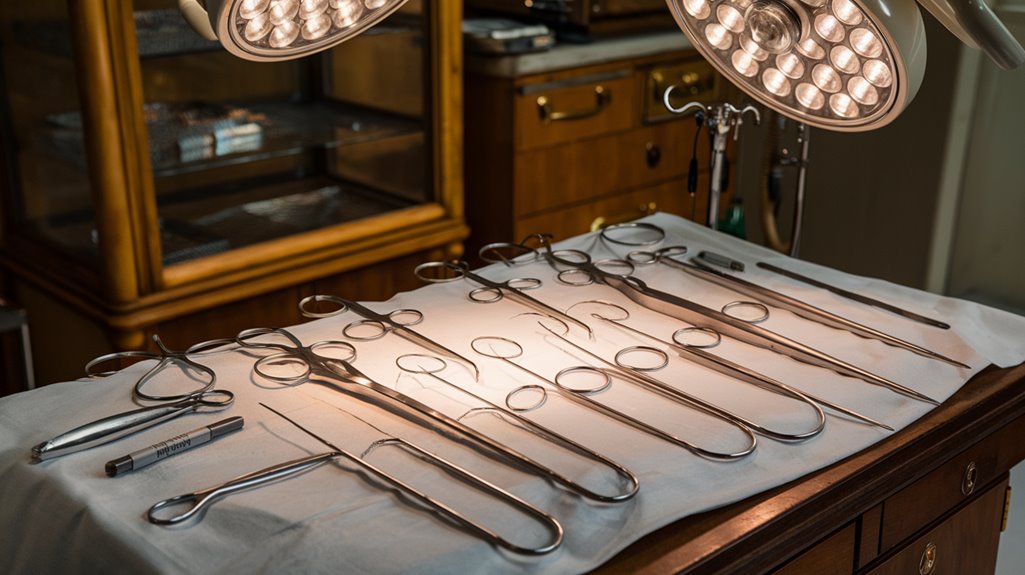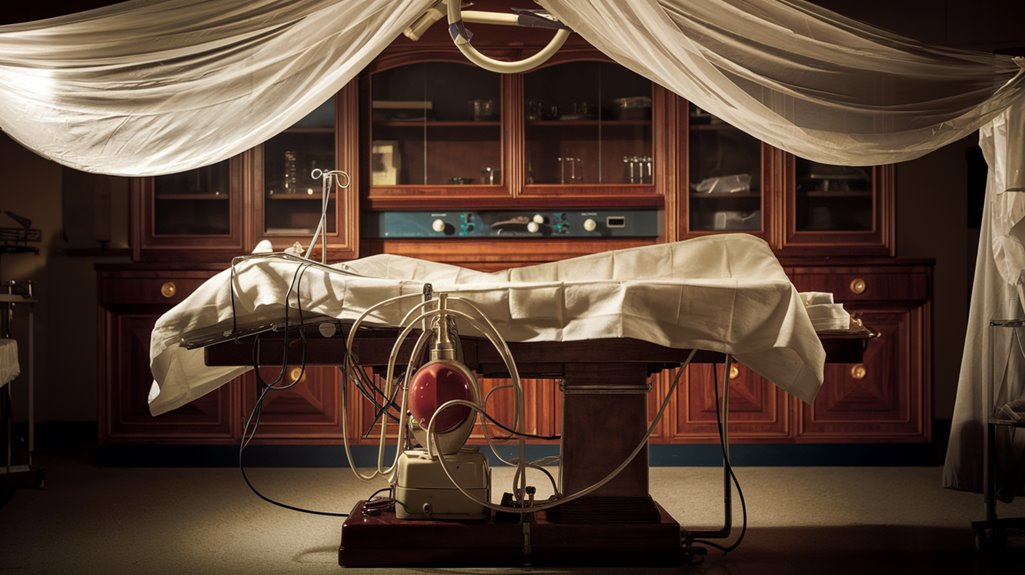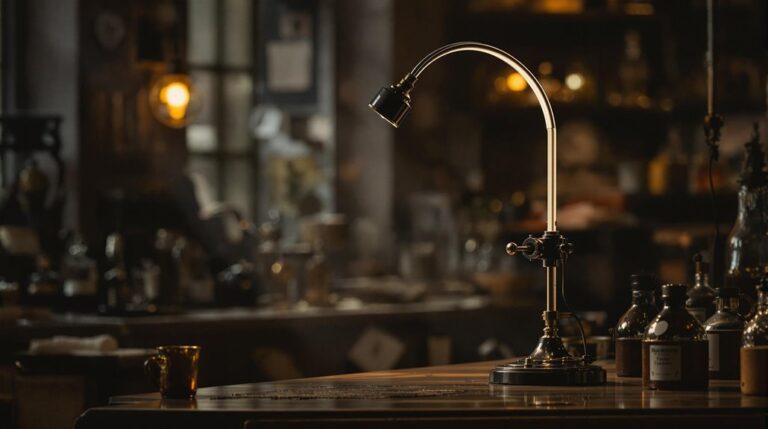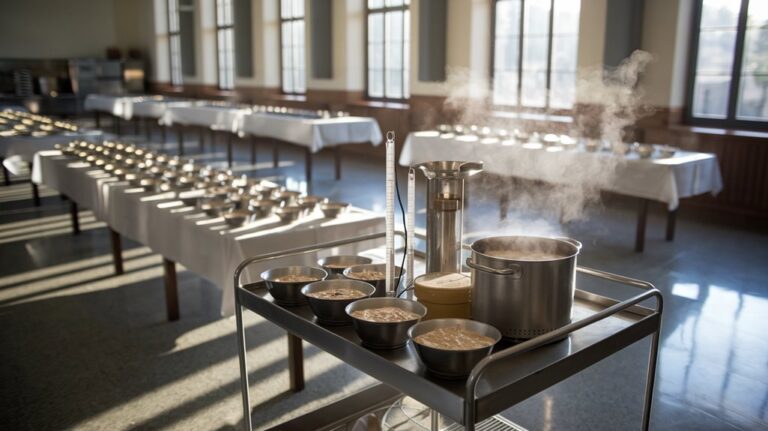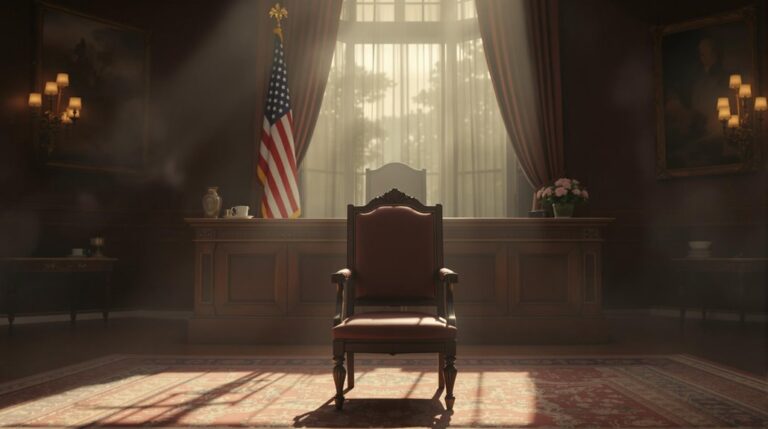Vivien Thomas’ Heart Surgery Hack: Defying Segregation to Save Blue Babies
You might wonder whether raw talent can truly overcome systemic barriers, but Vivien Thomas' revolutionary "blue baby" surgery proves it can. In the segregated 1940s, this brilliant African American carpenter-turned-surgical-innovator developed techniques that saved countless infant lives, despite being officially classified as a janitor at Johns Hopkins. His story isn't just about medical breakthroughs—it's about defying impossible odds to transform the future of cardiac surgery.
From Carpenter to Medical Pioneer: The Unlikely Journey
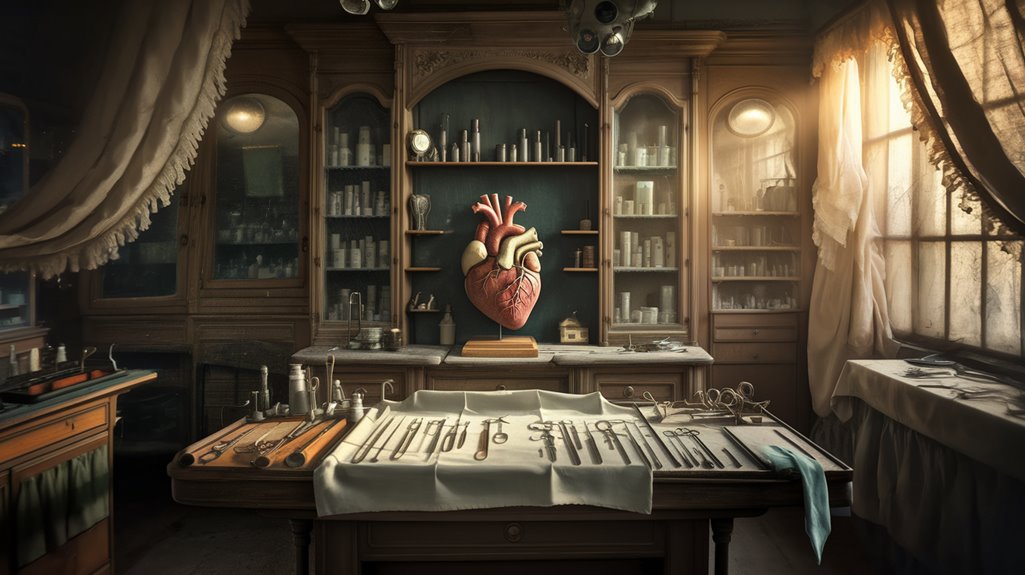
Although life had different plans for Vivien Thomas, a 1910-born Louisiana native who initially dreamed of becoming a carpenter, his path took an extraordinary turn when the 1930 bank crash derailed his medical school aspirations.
You'll find that what seemed like a setback – taking a job sweeping floors at Vanderbilt University – became the gateway to his remarkable future. His exceptional work ethic shone through as he spent sixteen hours a day in the medical school laboratory.
Under Dr. Alfred Blalock's mentorship, Thomas transformed his carpentry skills into medical innovation. He quickly mastered complex surgical techniques and designed specialized surgical instruments, drawing from his woodworking background. His unique ability to craft precise tools made him director of laboratories at Johns Hopkins after Blalock's death.
Despite facing racial segregation in Nashville, Thomas's natural talent for anatomy and physiology, coupled with training from Dr. Blalock and Dr. Joseph Beard, positioned him at the forefront of groundbreaking vascular and cardiac surgical research.
Breaking Ground at Johns Hopkins: A Tale of Persistence
When Vivien Thomas arrived at Johns Hopkins in 1941, he faced a stark reality: despite his exceptional surgical skills, the institution's racial barriers relegated most Black employees to janitorial roles.
You'll find few persistence stories more compelling than Thomas' journey through medical challenges and racial discrimination. He'd to wear street clothes to avoid attention and faced housing difficulties due to segregation, yet he continued perfecting surgical techniques that would save countless lives. Having started as a hospital lab assistant, Thomas had learned intricate surgical procedures through hands-on experimentation. His early experience at Vanderbilt University had laid the foundation for his surgical expertise.
His determination paid off. Thomas became the first African American to don a white lab coat in the hospital's halls, developed groundbreaking procedures for blue baby syndrome, and trained numerous renowned surgeons.
The Blue Baby Breakthrough: Engineering a Life-Saving Solution
In 1944, the medical world witnessed a revolutionary breakthrough at Johns Hopkins Hospital: the first successful "blue baby" surgery. This surgical innovation, developed by Vivien Thomas and performed by Dr. Alfred Blalock, transformed pediatric cardiology forever.
The procedure tackled a devastating condition called Tetralogy of Fallot, where babies couldn't get enough oxygen, making their skin appear blue. Laboratory experiments by Thomas at Vanderbilt University laid crucial groundwork years before the historic surgery.
Here's what made this breakthrough remarkable:
- Thomas engineered a shunt technique that increased blood flow to oxygen-starved lungs.
- The first patient, 15-month-old Eileen Saxon, survived the groundbreaking operation.
- The procedure challenged the prevailing belief that complex heart surgeries weren't possible.
- The Blalock-Taussig shunt went on to save thousands of young lives worldwide.
This medical breakthrough didn't just save lives—it launched the modern era of cardiac surgery. Despite having no formal medical degree, Thomas went on to teach generations of surgeons who continued his legacy.
Behind the Scenes: Creating Tools and Techniques
The pioneering blue baby surgery wouldn't have succeeded without the meticulous behind-the-scenes work that preceded it.
Before any human patient could be treated, Vivien Thomas had to perfect both the surgical instrumentation and the anastomotic modeling technique through extensive laboratory trials.
You might be surprised to learn that Thomas first tested the procedure on dogs, with his breakthrough success coming from an operation on a dog named Anna. Despite being grandson of a slave, Thomas's exceptional skill and determination drove him to achieve revolutionary medical breakthroughs.
This crucial experimental work helped him develop and refine specialized surgical tools for the delicate procedure.
His precision and attention to detail became so renowned that surgeons worldwide traveled to learn his standardized techniques.
Even prominent doctors like Denton Cooley and William Longmire received their training from Thomas, ensuring his innovative methods would continue saving lives for generations to come.
Overcoming Racial Barriers in 1940s Medicine
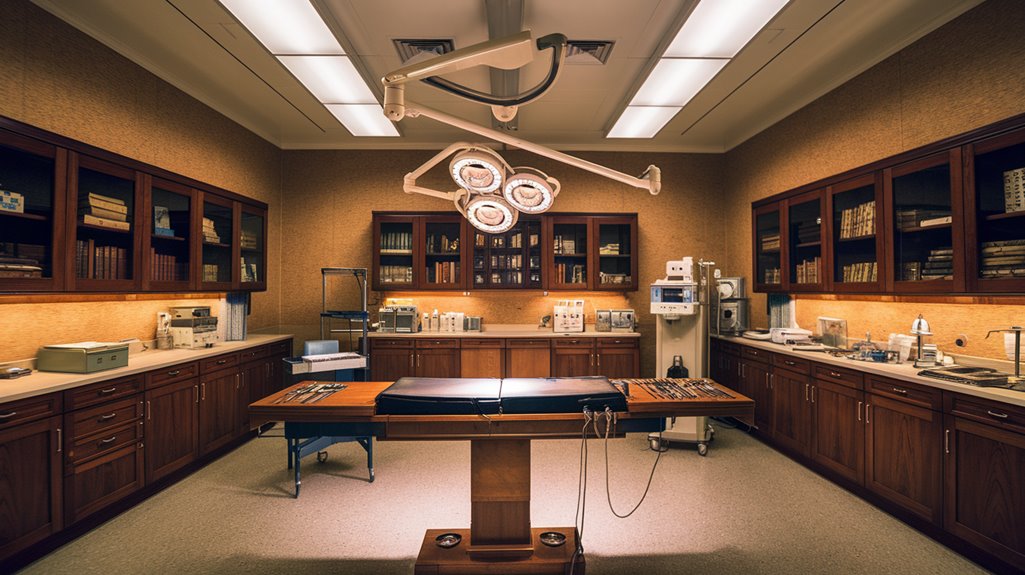
Despite his groundbreaking surgical innovations, Vivien Thomas faced profound racial discrimination in 1940s medicine.
The 1910 Flexner Report devastated Black medical education by forcing the closure of nearly all African American medical schools. You'll find it shocking that despite his exceptional skills, he was classified and paid as a janitor, reflecting the deep racial inequities of the era. While he revolutionized cardiac surgery, systemic exclusion kept him from receiving proper recognition for decades. His research with 200 laboratory dogs proved critical in developing life-saving cardiac procedures.
Here's what you need to know about the barriers Thomas overcame:
- Black physicians were marked with "col." in medical directories until 1940
- African Americans were banned from "first-class" white hospitals
- Less than 4% of physicians were Black, a statistic that barely changed in 120 years
- Economic disparities created massive pay gaps between white and Black doctors
Yet Thomas persisted, training 23 Black laboratory technicians and paving the way for future generations in medicine.
Legacy of Innovation: Reshaping Cardiac Surgery Forever
Building on his remarkable surgical breakthroughs, Vivien Thomas's innovations continue to save countless lives through modern cardiac surgery. His surgical innovation in developing the blue baby procedure revolutionized pediatric heart surgery, while his creation of specialized surgical instruments made complex operations possible.
You'll find his influence most profound in the renamed Blalock-Thomas-Taussig shunt, now officially recognized by Ontario's children's hospitals.
Through medical mentorship spanning 35 years at Johns Hopkins, Thomas trained generations of surgeons who've carried his techniques worldwide.
His legacy extends beyond the operating room – from the Vivien Thomas High School Research Program at Morehouse to his historic portrait at Johns Hopkins.
Today, his groundbreaking contributions remind us how one person's dedication can transform medicine and inspire future healthcare innovators.

